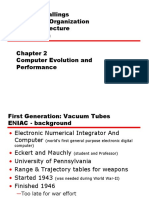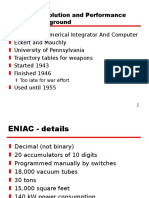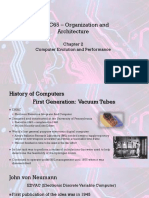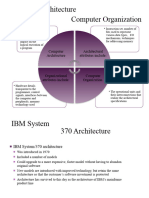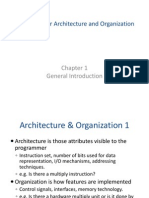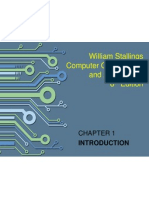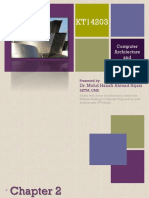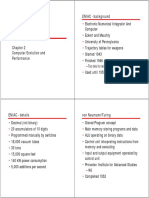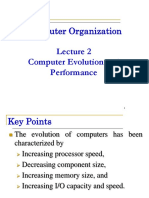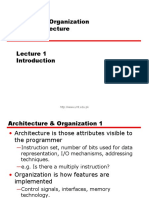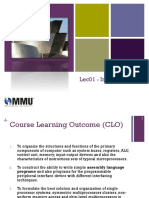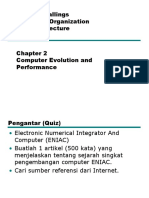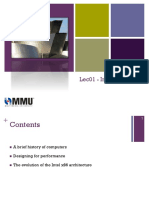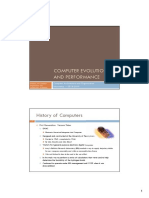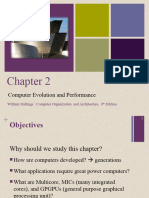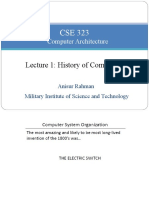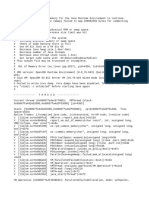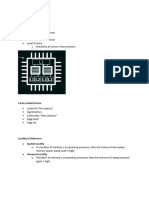0% found this document useful (0 votes)
54 views49 pagesMS Computer Architecture Course
This document discusses the evolution of computer architecture and performance. It covers the main generations of computers from vacuum tubes to integrated circuits. Key topics include Moore's law, the development of semiconductor memory and microprocessors, and techniques for improving performance such as pipelining, caching, and branch prediction. The document provides an overview of the major advances in computer hardware and architecture over time.
Uploaded by
torabgullCopyright
© © All Rights Reserved
We take content rights seriously. If you suspect this is your content, claim it here.
Available Formats
Download as PDF, TXT or read online on Scribd
0% found this document useful (0 votes)
54 views49 pagesMS Computer Architecture Course
This document discusses the evolution of computer architecture and performance. It covers the main generations of computers from vacuum tubes to integrated circuits. Key topics include Moore's law, the development of semiconductor memory and microprocessors, and techniques for improving performance such as pipelining, caching, and branch prediction. The document provides an overview of the major advances in computer hardware and architecture over time.
Uploaded by
torabgullCopyright
© © All Rights Reserved
We take content rights seriously. If you suspect this is your content, claim it here.
Available Formats
Download as PDF, TXT or read online on Scribd
/ 49
